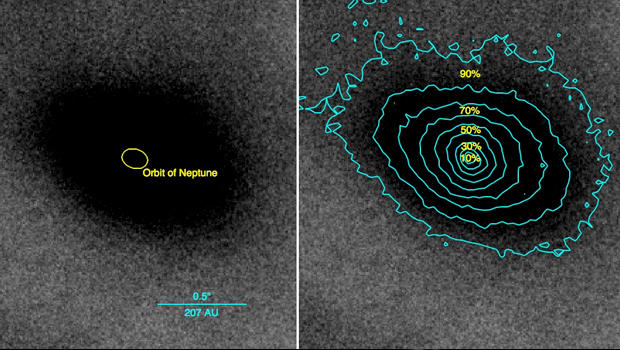Telescope captures images twice as sharp as Hubble
Astronomers say they are now able to capture images of the sky that are twice as sharp as those captured by the Hubble telescope.
A team of scientists from the University of Arizona, Arcetri Observatory in Italy and the Carnegie Observatory developed the technology that will allow for higher resolution images to be taken from the Magellan 6.5m telescope in Chile. They've named the new adaptive optics system "MagAO."
"We can, for the first time, make deep images that resolve objects just 0.02 arcseconds across... It is like the width of a dime see over 100 miles away. It could also be compared to resolving a baseball diamond on the moon," UA professor Laird Close said in a press release.
"Up until now, large telescopes could make the theoretically sharpest photos only in infrared (long wavelength) light, but our new camera can work in the visible and make photos twice as sharp," added Dr. Jared Males, a NASA Sagan Fellow at UA.
According to the release, the astronomers explained how they reduce the "blurring" effects of the atmosphere:
"To obtain the excellent correction of atmospheric turbulence required for 'visible light AO,' the team developed a very powerful adaptive optics system that floats a thin (1/16 inch thick) curved glass mirror (2.7 feet across) on a magnetic field 30 feet above the large 21 foot primary mirror of the telescope. This so-called 'Adaptive Secondary Mirror' (ASM) can change its shape at 585 points on its surface 1,000 times a second."
The MagAO system has already captured the first images of the binary star pair Theta 1 Ori C. Astronomers have long known it be a pair of stars, but have never been able to see the separation.
"I have been imagining Theta 1 Ori C for over 20 years and never could I directly see that it was in fact two stars," said Dr. Close. "But as soon as we turned on the MagAO system it was beautifully split into two stars just 0.032 arcseconds apart."
The telescope will also be used to gain a better understanding of the distribution of gas and dust in the development of young planetary systems.


